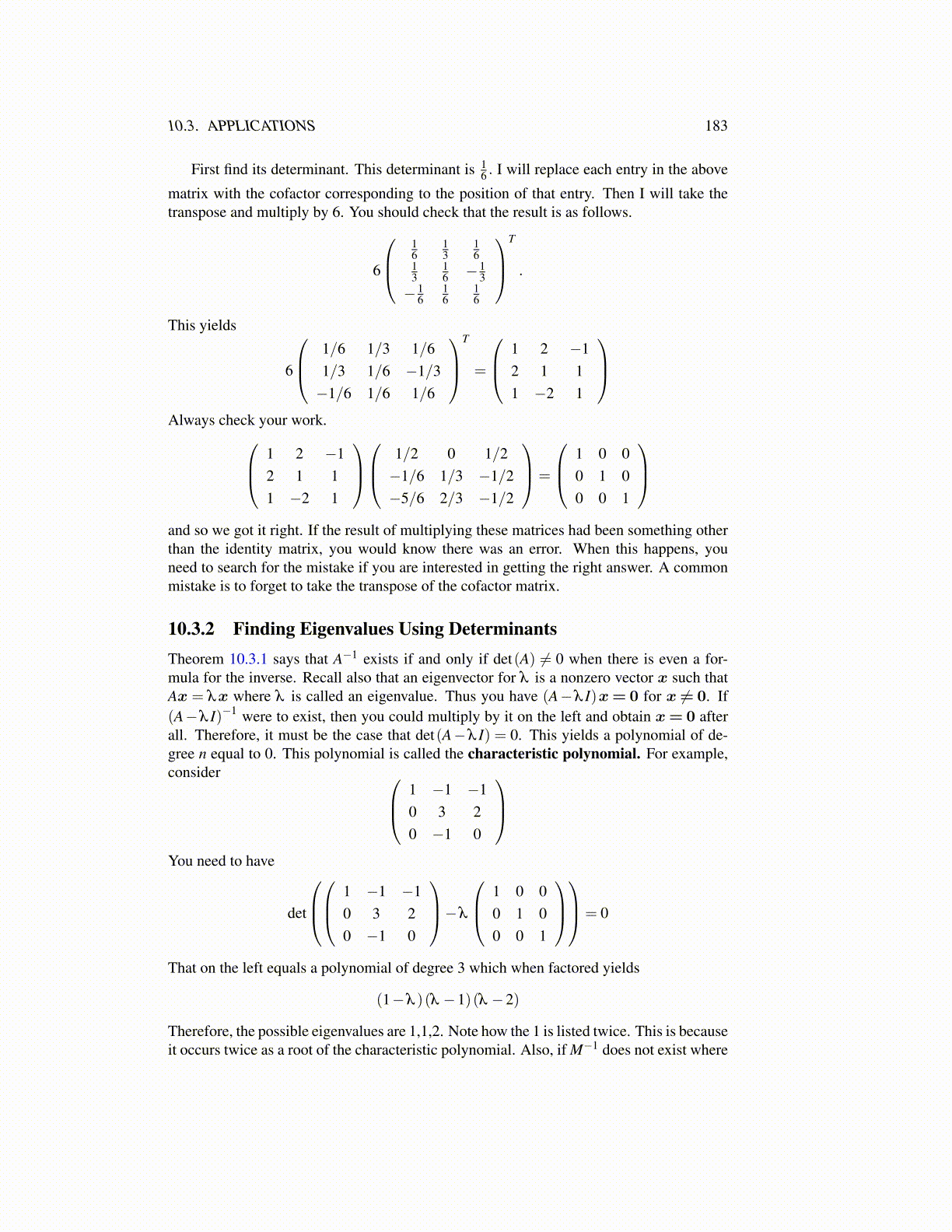
10.3. APPLICATIONS 183
First find its determinant. This determinant is 16 . I will replace each entry in the above
matrix with the cofactor corresponding to the position of that entry. Then I will take thetranspose and multiply by 6. You should check that the result is as follows.
6
16
13
16
13
16 − 1
3− 1
616
16
T
.
This yields
6
1/6 1/3 1/61/3 1/6 −1/3−1/6 1/6 1/6
T
=
1 2 −12 1 11 −2 1
Always check your work. 1 2 −1
2 1 11 −2 1
1/2 0 1/2−1/6 1/3 −1/2−5/6 2/3 −1/2
=
1 0 00 1 00 0 1
and so we got it right. If the result of multiplying these matrices had been something otherthan the identity matrix, you would know there was an error. When this happens, youneed to search for the mistake if you are interested in getting the right answer. A commonmistake is to forget to take the transpose of the cofactor matrix.
10.3.2 Finding Eigenvalues Using DeterminantsTheorem 10.3.1 says that A−1 exists if and only if det(A) ̸= 0 when there is even a for-mula for the inverse. Recall also that an eigenvector for λ is a nonzero vector x such thatAx = λx where λ is called an eigenvalue. Thus you have (A−λ I)x= 0 for x ̸= 0. If(A−λ I)−1 were to exist, then you could multiply by it on the left and obtain x= 0 afterall. Therefore, it must be the case that det(A−λ I) = 0. This yields a polynomial of de-gree n equal to 0. This polynomial is called the characteristic polynomial. For example,consider 1 −1 −1
0 3 20 −1 0
You need to have
det
1 −1 −1
0 3 20 −1 0
−λ
1 0 00 1 00 0 1
= 0
That on the left equals a polynomial of degree 3 which when factored yields
(1−λ )(λ −1)(λ −2)
Therefore, the possible eigenvalues are 1,1,2. Note how the 1 is listed twice. This is becauseit occurs twice as a root of the characteristic polynomial. Also, if M−1 does not exist where